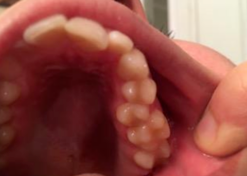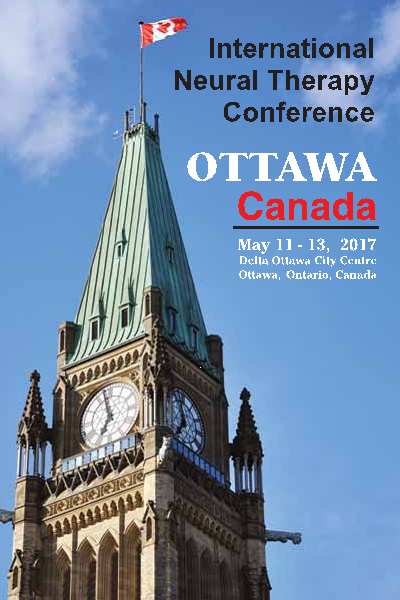|
Dear Colleagues: This month I would like to present an interesting case of "shortness of breath". "Shortness of breath" can mean a lot of things, but in this instance my 28 year-old female patient meant that she was experiencing something closer to "air hunger" - or a feeling of being unable to take in enough air with a normal inspiration. In addition, she was yawning excessively and felt tightness around her throat. Her symptoms had begun suddenly 9 months before and were alarming enough that she had gone to the local Emergency Department. Investigations including x-rays, electrocardiogram, blood tests and arterial oxygen pressure were all normal. There was no preceding history of trauma, dental work or vaccination, but she had been under considerable personal stress. She was aware that she was clenching her teeth at night. She was otherwise very healthy, exercised regularly and had been on a gluten-free diet for 14 years. "Air hunger" is not in my experience a rare complaint, although seldom is it the patient's main reason for consultation. Often there is a history of "being winded", i.e. suddenly being unable to breath after a blow to the midriff or a fall on the back. The trauma may have occured many years before, even in childhood. With this history, the respiratory diaphragm is usually tight, i.e. it does not release fully on expiration, and the respiratory volume is reduced. Other than spirometry, I cannot think of any simple way to diagnose a tight diaphragm. However using osteopathic technique, one can usually feel "arcing" or a subtle pulsation of about 60 cpm emanating from the diaphragm. "Unwinding" the diaphragm, i.e. placing opposing hands on the anterior and posterior trunk while the patient is supine and waiting for a release usually cures the condition in one treatment. The whole body relaxes and chronic headache or backache may subside, or at least be easier to treat. I have never tried this, but quaddles of dilute local anaesthetic around the trunk might achieve the same effect. (Readers' comments are welcome!) In my patient's case no arcing could be felt in the diaphragm and the only abnormality I could find was tightness of the temporal and facial bones, consistent with chronic facial muscle tension and clenching of the teeth. This was treated using osteopathic technique. A search was made for interference fields using autonomic response testing in the viscera (including the lungs), the teeth, tonsils and cervical ganglia (because of the tightness around her throat), but nothing was found. On a second visit two months later, there had been no change in her shortness of breath. This time I used an Ayurvedic technique taught me by my friend and colleague Carlos Chiriboga of Ecuador. See Vol.6 No.2 of (http://www.neuraltherapybook.com/newsletters/). Strong pulses were found in all the areas corresponding to the right side of her body; no pulse was found on the left side corresponding to the left head, neck and upper trunk. This meant that an interference field was to be found in the left upper third of the body. A careful examination of tonsils, cranial ganglia, lung and vaccination sites using autonomic response testing, produced nothing. However a re-assessment of the teeth (I had checked them on her first visit) showed an interference field at tooth 2.5 (tooth 13 in the American system). The tooth appeared in perfect health but was crowded by the adjacent tooth at 2.4 (12). Energetic neural therapy using the Tenscam device abolished the interference field in the tooth, but autonomic regulation was still blocked. (See Chapter 5 of my book on neural therapy.) The temporal bones were externally rotated and nearly immobile, likely indicating chronic clenching due to anxiety. This was treated using an osteopathic technique and normal autonomic regulation was restored.
"Air hunger" is an unusual primary complaint and is usually caused by a tight respiratory diaphragm, which can be treated easily with osteopathic manipulation. However in this case the air hunger was caused by an interference field in a second bicuspid (2.5 or 13 in the American system), disturbing energy flow in an acupuncture meridian shared by the lung. The interference field was created by a combination of mechanical crowding of the tooth exacerbated by excessive clenching of the teeth. First International Neural Therapy Conference in North America We are now only two months from the first International Neural Therapy conference in North America. If you are considering attending, I would recommend that you register now and book a hotel room. Early registration discount ends on April 10th and hotel rooms are being held only until then. Rooms will be in high demand this year as 2017 is Canada's 150th anniversary of Confederation
--------------------------------------------------------------------------------------------- Third Heidelberg Neural Therapy Conference Heidelberg Germany |
|
A free Spanish language neural therapy newsletter is available, published by D. David Vinjes of Barcelona, Spain at http://www.terapianeural.com/. Sign up at the site! Discussions are underway with regard to translating both English and Spanish literature. Feedback with regard to interest is invited from you, the readership of this newsletter. Your feedback is always welcome. |
| Contact Information
~~~~~~~~~~~~~~~~~~~~~~~~~~~~~~~~~~~~~~~~~~~~~~~~ email: drkidd@neuraltherapybook.comphone: 613-432-6596 web: http://www.neuraltherapybook.com ~~~~~~~~~~~~~~~~~~~~~~~~~~~~~~~~~~~~~~~~~~~~~~~~ |


